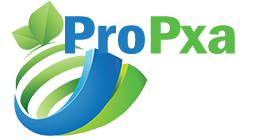Recombinant DNA technology has changed biological research and opened up new opportunities for invention. It is also referred to as genetic engineering and is currently a popular method for modifying genetic material outside of an organism to produce better and desirable traits in living things. It involves inserting DNA fragments with desirable gene sequences from a variety of sources into the right vector. Additionally, it helps in the safe, economical, and sufficient production of essential proteins needed for diet and health problem prevention.
The market for recombinant DNA technology in 2021 was worth USD 707.20 billion and will be worth USD 1378.76 billion by 2030, growing at a 7.7% CAGR during the forecast period.
The market for recombinant DNA technology will develop due to rising consumer demand for recombinant and genetically modified products for human health, food, and agriculture. More government financing for the application of recombinant DNA technology to address diverse food, healthcare, and environmental problems will support market expansion.
Market Dynamics
Drivers
Recombinant DNA technology is used to create novel medications and vaccines, primarily used to improve various health concerns. This is one of the main driving forces behind the market’s expansion, along with the improving treatment approaches caused by the development of diagnostics kits, monitoring equipment, and new therapy approaches. Additionally, research on genetically modified organisms (GMO), which include microorganisms that are regarded as bio degraders and manufacturers of clean fuel, is increasing. This can be attributed to quick urbanization, expanding world population, shrinking arable land, severe mounting food shortages, and growing use of GMO crops.
Restraints
The time spent on producing new items, which requires significant business investment, is a constraint for any organization. There are occasionally public concerns about using GM products.
Opportunity
Prokaryotes protect themselves against viruses via a technique known as CRISPR. In 2015, Science Magazine named the development of the CRISPR genome editing technique the “Breakthrough of the Year.” A clinical trial using the CRISPR/Cas mechanism of gene editing as a treatment for persons who have a gene mutation that causes blindness at birth was approve by the U.S. FDA in 2018. This technology’s widespread and untapped applications provide recombinant DNA technology with a huge window of opportunity.
Market Segmentation
By Product
On the basis of product, the market is segment into vaccines, therapeutic agents, genetically modified crops, and specialty chemicals.
In 2020, the therapeutic agent segment was the largest market contributor, with a significant revenue share. It is utilize for the treatment of a disorder or disease. The FDA has approved numerous therapeutic agents for treating a variety of disorders. For instance, in 2007, the FDA authorized EPOGEN, an erythropoietin alfa used to treat anemia brought on by malignancies and HIV infection.
By Application
In terms of application, the recombinant DNA technology market is segment into health, environment, food and agriculture, and disease-fighting.
The health and disease segment led the entire market with a significant revenue share. The largest share of this market segment is due to the availability of a broad range of recombinant products for treating human diseases, including medications, vaccines, and enzyme substitutes. Additionally, this technology’s extensive usage in the treatment of animal diseases has fueled the development of this market.
By End-User
On the basis of end-user, the market is segmented into biotechnological and pharmaceutical companies, academic & government research institutes, and others.
Pharmaceutical and biotech companies profit greatly from this industry since the procedures speed up their ability to produce new drugs. Additionally, the final items produce in this market using rDNA techniques are highly regard and show a notable increase in productivity. As a result, these groups make up a larger portion.
Regional Analysis
North America holds a significant position in the market, with a revenue share of nearly 52.3%. It is because North America has a large number of research facilities and pharmaceutical and biotechnology industries. Fujifilm Diosynth Biotechnologies invested USD 2 billion in a facility expansion in 2021. Per the US Bureau of Economic Analysis, the biotechnology industry contributed nearly 1.5% of the nation’s GDP. It is a desirable location for investment in the market because it has infrastructure and rules that support the establishment of enterprises in the area.
Key Players
- Pfizer
- Amgen
- Bayer
- BASF
- DuPont Pioneer
- GenScript
- Novo Nordisk
- Biogen
- Monsanto
- Biogen
- Novartis AG
- Thermo Fisher Scientific Inc.
- Sanofi
The market for recombinant DNA technology in 2021 was worth USD 707.20 billion and will be worth USD 1378.76 billion by 2030, growing at a 7.7% CAGR during the forecast period. The main factor boosting the recombinant DNA technology market is the growing need for biopharmaceuticals and increasing investment in biotechnology.
Related Reports:
Commercial Drones Market Report –
The global automotive wiring harness market size was $49.04 Billion in 2021 and is predicted to reach $74.46 Billion by 2030, representing a CAGR of 4.75% during the forecast period 2021 – 2030.




















